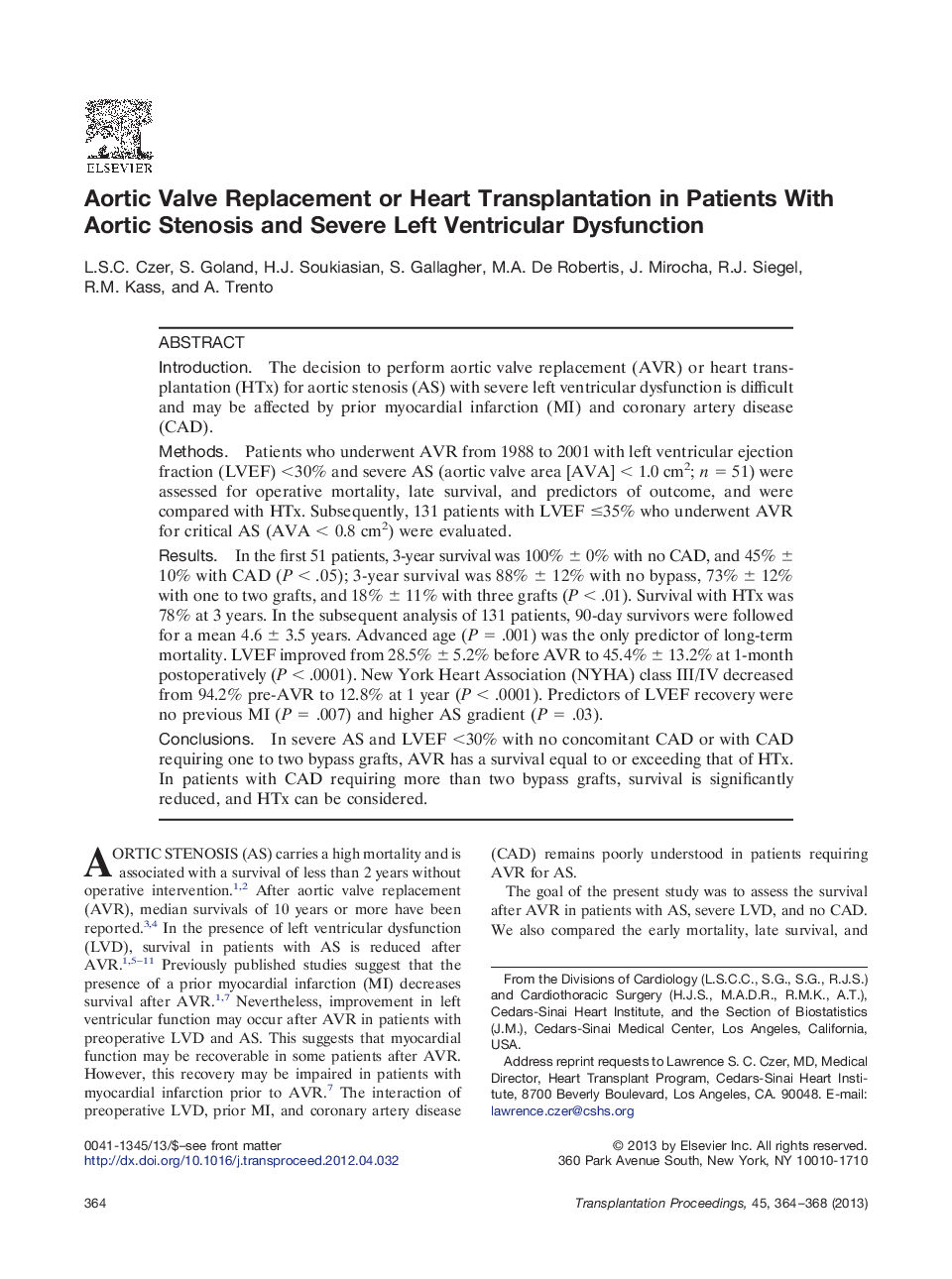| Article ID | Journal | Published Year | Pages | File Type |
|---|---|---|---|---|
| 4257126 | Transplantation Proceedings | 2013 | 5 Pages |
IntroductionThe decision to perform aortic valve replacement (AVR) or heart transplantation (HTx) for aortic stenosis (AS) with severe left ventricular dysfunction is difficult and may be affected by prior myocardial infarction (MI) and coronary artery disease (CAD).MethodsPatients who underwent AVR from 1988 to 2001 with left ventricular ejection fraction (LVEF) <30% and severe AS (aortic valve area [AVA] < 1.0 cm2; n = 51) were assessed for operative mortality, late survival, and predictors of outcome, and were compared with HTx. Subsequently, 131 patients with LVEF ≤35% who underwent AVR for critical AS (AVA < 0.8 cm2) were evaluated.ResultsIn the first 51 patients, 3-year survival was 100% ± 0% with no CAD, and 45% ± 10% with CAD (P < .05); 3-year survival was 88% ± 12% with no bypass, 73% ± 12% with one to two grafts, and 18% ± 11% with three grafts (P < .01). Survival with HTx was 78% at 3 years. In the subsequent analysis of 131 patients, 90-day survivors were followed for a mean 4.6 ± 3.5 years. Advanced age (P = .001) was the only predictor of long-term mortality. LVEF improved from 28.5% ± 5.2% before AVR to 45.4% ± 13.2% at 1-month postoperatively (P < .0001). New York Heart Association (NYHA) class III/IV decreased from 94.2% pre-AVR to 12.8% at 1 year (P < .0001). Predictors of LVEF recovery were no previous MI (P = .007) and higher AS gradient (P = .03).ConclusionsIn severe AS and LVEF <30% with no concomitant CAD or with CAD requiring one to two bypass grafts, AVR has a survival equal to or exceeding that of HTx. In patients with CAD requiring more than two bypass grafts, survival is significantly reduced, and HTx can be considered.
